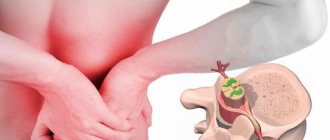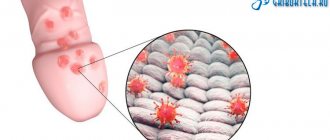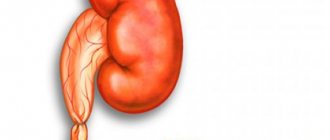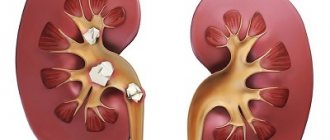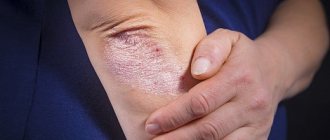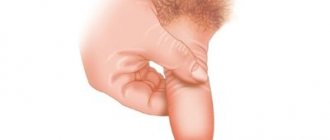Andrology
10357
4 comments
The structure of the penis contains cavernous bodies containing a large number of small vessels. These areas are located in a protein shell of elastic tissue, which stretches during an erectile moment - the penis is filled with blood, it straightens, remaining in this state. Peyronie's disease is considered a violation of the protein membrane - plaques are formed that interfere with the stretching process. Deformation of the organ occurs, it bends, becomes weak and painful. What kind of pathology is this? He cured Peyronie's disease himself - is it possible or not?
Diagnostics
The main diagnostic method is examination of the penis and palpation; it is with its help that plaques formed inside the penis can be detected.
Using ultrasound, you can determine the shape and size of plaques. Very often, along with an ultrasound, Doppler sonography is also performed in order to find out whether there is a circulatory disorder in the genital organ. Computed tomography and magnetic resonance imaging are used if plaques cannot be seen using ultrasound.
A new and fairly modern diagnostic method is also very often used: spiral computed tomography. It gives the most comprehensive idea of the development of the disease, and with its help you can find out what density the pathological areas of the penis have. This type of diagnosis is used only if the patient is prescribed surgical treatment.
X-ray therapy is also used as a diagnosis, with which you can see the general condition of the male genital organ.
Conservative treatment
Drug therapy is prescribed only if the disease is at an early stage of development, that is, up to eighteen months. Most often, drugs and vitamins are used that help resolve the resulting plaques and improve blood circulation. Do not forget that these drugs should be used only under the supervision of a physician, as they have many side effects. Self-medication is also undesirable, since all these medications have many contraindications.
Very often, subcutaneous injections are used in the male genital organ, more precisely in the places where plaques form. Subcutaneous injections are not recommended into the plaque itself, because this leads to the formation of microtraumas and provokes the formation of new seals.
Physiotherapy is also used to combat Peyronie's disease. Physiotherapeutic methods are aimed at accelerating the process of biochemical reactions, which can help cope with the curvature of the genital organ, as well as achieve an analgesic effect. The advantage of the physiotherapeutic method is that it has virtually no side effects.
Sometimes, as part of conservative treatment, a man is prescribed treatment by a psychologist to increase self-esteem and eliminate psychological complexes caused by this disease.
The goal of conservative treatment is to ensure that the compacted nodules resolve and improve the blood circulation of the male penis.
Classification
Peyronie's disease is an extremely rare pathology in men. Therefore, its classification is quite simple. It includes only two criteria:
- Depending on the form of curvature of the penis, the disease may be:
- dorsal – the penis is directed upward;
- ventral – the penis is curved downwards;
- lateral – the penis is turned to the side.
- By stage of occurrence:
- painful – discomfort and pain in the genitals, both during erection and at rest;
- functional – inability to have an active sex life. The penis is so curved that it does not fit into the vagina.
Traditional treatment
Very often, patients are simply afraid to see a doctor, since the problem is quite intimate, so sick patients very often try to self-medicate with the help of alternative medicine. Traditional medicine offers several inexpensive and convenient remedies that can help in the fight against Peyronie's disease.
Chestnut decoction
Treatment with chestnut is very popular. To do this, soften 20g of chestnut nuts, pour a glass of water over everything and boil, keep on low heat for 15 minutes. Cool the resulting substance and strain through a sieve. This decoction must be consumed before meals for three months.
Mixed herbal mixture
To make it, you should mix equal amounts of burdock and sage roots, oregano primroses, flaxseed and capitula (these herbs can be purchased at the pharmacy), pour a liter of boiling water over everything and let it brew overnight. In the morning, strain all this, the resulting substance should be drunk 3-4 times a day 30 minutes before meals.
Sage bath
Pour three packs of pharmaceutical dried sage into a bucket, pour boiling water over it all and let it brew for 30 minutes, then strain the resulting substance. You need to sit in the resulting herbal infusion for about 15 minutes, preferably before bed.
Peyronie's disease: possible consequences and treatment
With normal functioning of the urinary system and normal exchange of salts in the body, the likelihood of developing Peyronie's disease is minimized. This also applies to those cases where a mechanical injury to the penis was sustained with rupture of the tunica albuginea (most often this happens in athletes, during active sexual intercourse or during anal sex).
Traditional medicine in this case will be an excellent prevention for further complications of the disease. Moreover, it will be most effective in the first 6 months after injury, when fibrosis has not yet occurred.
And even if there is a compaction, traditional medicine will help avoid calcification of a benign neoplasm. However, during this period, doctors also recommend enrolling in a physical therapy room (radio wave therapy). All this together will prevent curvature of the penis.
But if there is already a visible deformation, and more than 6 months have passed since the first signs of the disease appeared, then the likelihood that any conservative therapy will help get rid of it is very low.
In these cases, it is recommended not to waste time and seek help from an andrologist as soon as possible. And he will most likely refer you for a consultation with a surgeon and subsequent surgery. Unfortunately, in complicated and advanced cases of the disease, this is the only treatment option.
Can the disease go away on its own? Fibroma can really disappear without a trace. If the lump has increased in size and its location has acquired a crooked shape, then the disease itself will not disappear.
In the best case, ultrasound therapy (aimed at crushing the fibroid) will help; in the worst case, only surgery. The final decision on the treatment method used depends only on the clinical picture of the patient and the direction of the doctor himself.
Prevention
Prevention measures for Peyronie's disease:
- do not have sex while under the influence of drugs or alcohol to avoid injury to the penis;
- between the ages of 30 and 60, undergo annual preventive examinations;
- lead a healthy lifestyle;
- control body weight;
- monitor the pressure level;
- wear comfortable underwear;
- exercise regularly.
If any disorders of the reproductive system occur, you must immediately contact a urologist to diagnose and begin treatment.
Radevich Igor Tadeushevich, sex therapist-andrologist, 1st category
9, total, today
( 31 votes, average: 4.65 out of 5)
Asthenozoospermia - causes, symptoms, treatment, consequences and likelihood of conception
Necrospermia: development factors, diagnosis and treatment
Related Posts
Home healing options
At home, doctors themselves recommend doing exercises aimed at normalizing the functioning and elasticity of the tunica albuginea, cavernous and cavernous bodies of the penis. It is also possible to use the Jelqing technique to stretch the penis. But first, immediately before the procedure itself, it is very important to “warm up” the penis.
To do this, you can simply take a warm bath for 20-30 minutes, or wrap your penis in a thick terry towel dipped in relatively hot water (up to 60-70 degrees, no more).
Simple massaging of the area of fibrosis also helps well with Peyronie's. The exercise is performed for 10-20 minutes 2 times a day (in a state of erection). It acts like regular shock wave therapy aimed at breaking up the fibroid body. When performing a massage, you should adhere to the following rules:
- do with the pads of your thumbs (two at a time);
- use olive oil in combination with tea tree oil (helps soften the upper and middle layers of the epithelium, improves slip);
- During the exercise, a man should experience slight discomfort - this indicates that the elasticity of the corpus cavernosum is changing (that is, press until a slight pain occurs).
But among medications, doctors mainly prescribe drugs aimed at normalizing the mineral-salt balance. This prevents the appearance of the fibroma itself (and if it already exists, it reduces the likelihood of it increasing in size). Most often, doctors prescribe for this:
- Colchicine;
- Tamoxifen;
- vitamin E (in a therapeutic increased dosage).
Only the attending andrologist has the right to select and prescribe medications. It is within his competence to diagnose and treat male diseases related to the functioning of the urethra, penis, and reproductive system. In rare cases, treatment is prescribed by a urologist.
But among the folk methods on thematic forums they most often advise:
- horse chestnut decoction;
- sage baths;
- leech ointment.
The decoction is prepared from ripe chestnuts.
- 50 grams are ground into powder;
- mixed with 200 milliliters of strong alcohol (water is also suitable, but ethyl alcohol is the best extract);
- all this is infused for 3 days in a dark place;
- then strain and take 1 teaspoon 3 times a day. Helps normalize the concentration of salts and minerals.
Baths with sage help in the active stage of the disease, when there is already a curvature. Easy to prepare:
- Add 3-4 packages of dry sage base to 1 bucket of boiling water;
- pour the mixture into the bath, add cold water (so that the level is at least 30 centimeters);
- sit in the bathroom for 30-50 minutes.
Perform the procedure up to 2 times a week until complete recovery.
Leech ointment is considered the most radical treatment option, but no less effective than the use of medications. To prepare it:
- mix 50 grams of dried leech base (can be purchased even in pharmacies) and 15-20 grams of Heparin ointment;
- add 2-3 tablespoons of Dimexide solution to the mixture;
- 150 grams of light honey are also added there.
Mix everything thoroughly and the ointment can be considered ready. Apply specifically to the problem area of the penis (where the fibroid or curvature is) 2 times a day for 30-40 minutes (and if possible, longer). This ointment perfectly eliminates pain and reduces inflammation.
Diagnostic measures
After visiting a doctor, first of all, anamnesis is collected. The doctor must draw up a detailed picture of the disease, analyzing the patient’s complaints and taking into account all chronic and concomitant diseases. In order to determine the quality of sexual life, the patient fills out a special questionnaire. Next, an erection is artificially provoked using a vacuum erector. In a state of excitement, the doctor assesses the degree of curvature of the penis, its general shape, and determines the number and location of fibrous plaques. To confirm the diagnosis, instrumental studies are mandatory:
- Ultrasound examination of the vessels of the penis. It makes it possible not only to assess the blood supply to the organ, but also to identify characteristic compactions. The method is very informative in the acute stage and is prescribed much more often than radiography.
- Magnetic resonance imaging of the penis. Thanks to a detailed image of the organ in a cross-section, the doctor accurately determines the parameters of subcutaneous seals, their location, impact on nearby vessels, and also analyzes and identifies problems with blood circulation.
- Cavernosography. It is an X-ray examination using a contrast agent that is injected directly into the penis. The method makes it possible to examine in detail the cavernous and spongy bodies of the organ, as well as all internal structures.
Considering the fact that the symptoms of Peyronie's disease are partly similar to the manifestations of other diseases, for example, syphilis, carcinoma, lymphogranuloma, other laboratory and instrumental tests may be prescribed for differentiation at the discretion of the doctor. The advisability of performing any of the tests is determined only by the attending doctor. Of course, unnecessary examination will not harm your health, but it will cause a waste of money. The same applies to the situation when a man chooses treatment at home despite the need to receive qualified medical care. Only in this case, treatment may not only be useless, but also cause significant harm.
Reasons for development
Injury to the shaft of the penis leads to ruptures and displacement of collagen fibers, damage to blood vessels, and the formation of hematomas. Normally, tissue regeneration occurs without consequences, but in some cases, fibroblast cells are activated, producing fibrin in large quantities. Gradually, the inflamed area is replaced by scar tissue, which over time “matures,” calcifies and becomes hard (osteogenic degeneration).
Injuries are considered the most common cause of onset of the disease. In 70% of patients with Peyronie's disease, damage to the penis occurred during sexual intercourse when the partner was on top.
A significant part of specialists in the field of urology are inclined to the autoimmune origin of the disease, believing that the cause of scar formation is an attack of one’s own immunity on the tissue of the tunica albuginea. This pathology is not systemic in nature, like lupus or arthritis.
According to the genetic theory, fibrous deformities develop due to a congenital disorder of the processes of collagen protein synthesis. Peyronie's disease can also be diagnosed in newborns if the urethral canal is too short or there is hypoplasia of the tunica albuginea. There are no pronounced plaques in such cases, but neoplasms of connective tissue are found in the cavernous bodies.
The main risk factors for the disease:
- age. The older the man, the less elastic the penis, and therefore the risk of injury increases significantly;
- disturbances in the processes of development and regeneration of connective tissue (Dupuytren's contracture);
- diabetes;
- vascular atherosclerosis;
- collagenoses;
- dyslipidemia;
- shortened urethra;
- deficiency of vitamin E or testosterone.
Peyronie's disease can be provoked by long-term use of a number of drugs:
- beta blockers;
- drugs for the treatment of cardiovascular pathologies;
- medications that raise blood pressure.
Alcoholism and smoking have an extremely negative effect on the elasticity of blood vessels and skin, and therefore are also included in the list of factors that provoke pathology.
Early diagnosis of Peyronie's disease significantly simplifies and speeds up the course of treatment, providing more opportunities for quick and painless correction of the shape of the penis. Examination methods used:
- inspection and palpation. At this stage, the doctor can already draw conclusions about the nature of the tumors;
- Ultrasound of the penis;
- radiography;
- cavernosography.
If necessary, an MRI of the pelvis is prescribed. It is important to distinguish a fibrous plaque from a malignant tumor, as well as the consequences of tuberculosis or syphilis.
Treatment
Each man has his own characteristics of the disease. If plaques can be palpated, but their presence is not accompanied by pain and intimate discomfort, then a wait-and-see approach is chosen, since all treatment methods can subsequently provoke erectile dysfunction. If the disease progresses, conservative methods - physical and drug therapy - are started. Treatment of Peyronie's disease with surgical methods is carried out in the presence of direct indications or due to the ineffectiveness of previous correction options.
Medicines
Conservative treatment of pathology is aimed at relieving pain and reducing the size of fibrous formations.
The following drugs are injected:
- steroids. It is advisable to use it during the first year and a half of the disease, while the plaque is just forming. Hormonal drugs are not popular due to their low effectiveness;
- Collagenase is an enzyme that helps soften fibrous formations by breaking down the peptide bonds of collagen. It is inserted directly into the plaque perpendicular to the shaft of the penis. A positive effect in the form of reducing the curvature of the penis is achieved in 65% of cases. The course of treatment is about 1.5 months, injections are given twice a week. In case of overdose, side effects are possible: hemorrhages and the appearance of new scars due to the decomposition of capillaries;
- interferon. The effectiveness of the drug in Peyronie's disease is still being studied;
- verapamil. Prescribed for injection into acute and chronic non-calcified plaques. Has a direct antifibrotic effect.
Oral medications:
- vitamin E. Can slightly reduce pain and slightly smooth out the deformation of the penis;
- colchicine Slows down the production of collagen and activates collagenase, has an anti-inflammatory effect. One of the side effects from taking pills is diarrhea;
- tamoxifen. It has antitumor and antiestrogenic properties. Deactivates T-lymphocytes and macrophages;
- potassium paraaminobenzoate (potaba). Slows down fibrin formation;
- pentoxifylline. Increases the level of nitric oxide and improves blood microcirculation, due to which not only the development of deformation slows down, but in some cases its regression is observed;
- propional L-carnitine. With regular use, it can reduce pain and the degree of curvature of the penis.
The course of treatment usually consists of a combination of different types of medications and vitamins.
Physiotherapy
Physiotherapy is an effective complement to drug treatment. The following methods are used:
- extracorporeal shock wave therapy (shock wave therapy). It has almost no effect on the degree of curvature of the penis, but relieves pain well;
- extension (traction) of the penis using a special device - an extender;
- iontophoresis with dexamethasone, verapamil, lidocaine. Relieves pain and reduces the size of formations;
- massage using heparin ointment to improve hemodynamics in the penis.
Of the conservative methods, injections of verapamil, interferon and traction are considered the most effective. The feasibility of other treatment methods requires additional research and confirmation.
Conservative therapy is advisable in the first 18 months of development of the pathology. A positive result can be achieved in 50-60% of cases.
Surgery
Surgery is recognized by doctors as the fastest and most effective method of treating Peyronie's disease. It is used only for fully formed plaques. Absolute indications are calcification of formations, significant curvature of the penis (more than 45 degrees), erectile dysfunction throughout the year.
There are 3 types of operations possible:
- Nesbit plication, in which folds are formed by suturing the tunica albuginea opposite the plaque. It is carried out in cases where the penis is longer than average (after the operation there will be a shortening of 15. -2 cm) and the angle of its curvature is no more than 45 degrees. In case of severe curvature, the tunica albuginea on the side opposite to the seal is excised and the tissue is sutured;
- plastic. The plaque is dissected with a linear incision into which an autograft is placed - a segment of the saphenous vein (autovenous patch taken from the leg above the ankle, or from the deep dorsal vein of the penis), a piece of skin (dermal flap) taken from the testicle or in the area of the pelvic bones. The use of a pericardial graft eliminates the need for a donor incision;
- penis prosthesis used for severe erectile dysfunction.
All manipulations are performed under general anesthesia.
Having sex is not allowed earlier than 1.5 months after surgery. Failure to follow the doctor's recommendations in the postoperative period can lead to suture ruptures, hematomas, displacement and rejection of implants. But spontaneous erections without physical force are beneficial because they help straighten the penis.
Recurrence of curvature is likely within a month. The reason is the reduction in the area of the transplanted flap. The situation usually resolves on its own within 3-6 months. In some cases, the penis is bent in the other direction. If the patient retained the ability to have a normal erection, the result of the operation is positive in 90% of cases.
Traditional methods
Occasionally it is possible to get rid of Peyronie's disease using traditional methods. It should be noted that treatment at home should be carried out after diagnosis and under the supervision of a specialist.
A decoction of chestnuts and honey is used as an adjuvant. Recipe: 20 g of nuts are poured into a glass of water, boiled for 15 minutes. Then the broth is filtered and taken 1/3 cup per day. Honey is added to soften the bitter taste.
The original method of treating Peyronie's disease is hirudotherapy. Substances that leeches secrete into the wound promote the dissolution of collagen. It is not recommended to use this method on your own. At home, you can prepare an external remedy based on dried leeches: mix ¼ cup of the raw material with heparin ointment, a glass of honey and two tablespoons of dimexide solution. Gently rub into the skin of the penis at night. The mixture should be stored in the refrigerator.
Since Peyronie's disease is provoked mainly by injuries, the most effective preventive measure would be careful handling of the penis:
- in sex, it is better to avoid positions where the girl is on top, especially for men at pre-retirement and retirement age;
- exclude sexual contacts while under the influence of alcohol or drugs;
- choose underpants and trousers that do not compress the genitals.
If any lumps are detected in the penis, a man should not wait for its shape to become distorted and self-medicate. Timely consultation with a urologist will preserve erectile function and eliminate the need for surgery.
Etiology of the disease
Peyronie's disease in men, in particular the mechanism of its development, is being studied to this day. Some questions regarding the specific origin of the disease remain controversial. Nevertheless, there are several main reasons that in one way or another have a negative impact on the functioning of the male reproductive system:
- Traumatization of the tissues of the penis. It is mechanical damage that often becomes the main cause of the development of Peyronie's disease. A man can get injured during masturbation, sexual intercourse, due to a blow or, for example, contact with aggressive substances. In this case, an inflammatory process first develops, which provokes changes in the structure of the tunica albuginea. It loses elasticity and becomes rigid. The progression of pathology leads to an increase in the volume of damaged tissue, which inevitably entails curvature of the penis.
- Long-term or uncontrolled use of medications for glaucoma, multiple sclerosis, seizures, pathologies of the cardiovascular system. The formation of fibrous plaques acts as a negative side effect.
- Predisposition at the genetic level. In this case, intensive production of collagen occurs in case of tissue damage of any degree. Peyronie's disease can simultaneously develop with such hereditary diseases as scleroderma, systemic vasculitis, etc.
- Hormonal changes caused by other diseases. A special role is played by an imbalance of hormones in one of the parts of the brain - the hypothalamus and adrenal cortex.
- Coronary heart disease, like arterial hypertension, can also cause the development of Peyronie's disease. In this case, the blood circulation process is disrupted, pathological changes occur in the vessels.
Men who have been diagnosed with diabetes are always at increased risk. Endocrine disorders can give rise to the formation of fibrous plaques under the skin of the penis. The same applies to the state of the immune system. The slightest malfunction can provoke an unhealthy state in which the body’s cells perceive themselves as foreign and begin an attack. Age-related changes not only lead to the development of many diseases, but also affect the elasticity of tissues. In addition, the skin loses its elasticity due to excessive drinking and smoking.
As a rule, the disease develops gradually; a man may not notice the manifestations of the disease until a significant increase in the size of the subcutaneous plaques. It can take about 1.5 years from the moment inflammation appears in a certain area of the penis to the formation of a lump in that place. At a certain stage, the growth of the plaque stops, but this does not indicate the beginning of recovery. Without proper treatment, penile curvature will not correct itself. Therefore, you should promptly pay attention to the characteristic signs, albeit weakly expressed, and also pay due attention to preventive measures.
